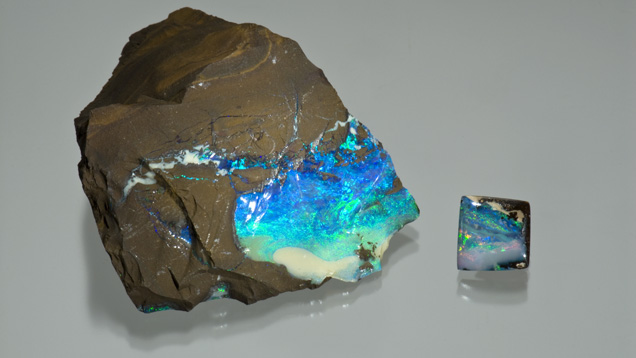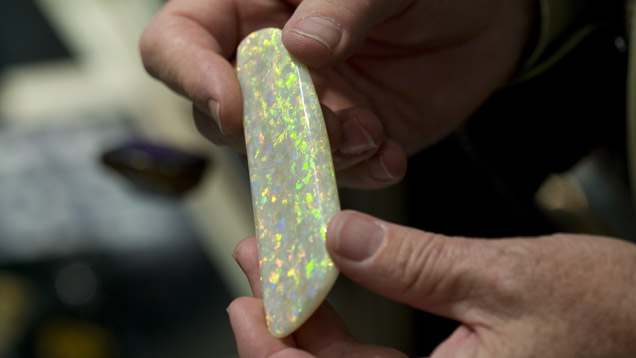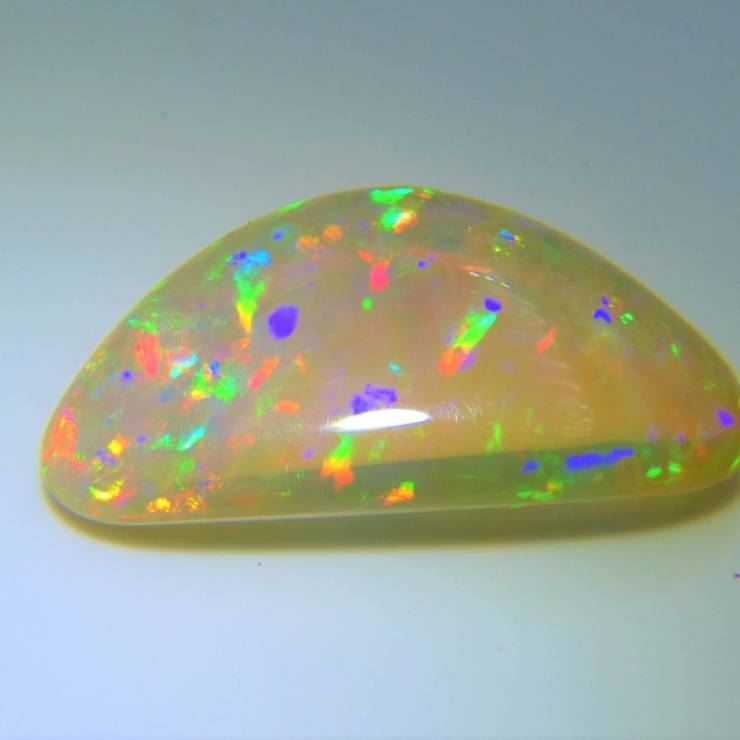Opal
Fireworks, jellyfish. Galaxy. Lightning bolt. Opal’s moving play of kaleidoscopic colors is unlike any other gem.
Because opal is the color of other gems, the Romans considered it the rarest and most powerful of them all. The Bedouin believed that opals contained lightning and fell from the sky during storms. When Australian mines began producing opals commercially in the 1990s, they quickly became the world’s main source of this October stone.
Opal is the product of seasonal rains that have soaked dry land in regions such as Australia’s “outback” semi-desert. The showers soaked deep into the ancient underground rock and carried dissolved silica (a compound of silicon and oxygen) downwards.
During the dry season, a large part of the water evaporated and solid sediments of silica remained in the cracks and between the layers of the underground sedimentary rocks. The silica deposits formed opal.
How opal is formed
Opal is known for its unique display of blinking rainbow colors called play-of-color. There are two broad classes of opal: rare and common. Expensive opal shows a color play, ordinary opal does not.
The color game occurs in expensive opals because it consists of submicroscopic balls stacked in a grid pattern – like layers of ping pong balls in a box. As light waves move between spheres, the waves diffract or bend. When they bend, they break down into rainbow colors, called spectral colors. The result is a play of colors.
The color you see varies depending on the size of the balls. Balls with a diameter of about 0.1 micron (one tenth of a millionth of a meter) form a purple color. The approximately 0.2 micron beads produce a red color. The sizes between them create the remaining colors of the rainbow.
Although experts divide expensive opals into many different categories, the five main types are:
White or light opal: Translucent to semi-translucent, with a play of colors on a white or light gray background color, called bodycolor.
Black Opal: Translucent to opaque, with a play of colors on a black or other dark background.
Fire Opal: Transparent to translucent, with brown, yellow, orange or red body color. This material – which often does not show a play of colors – is also known as “Mexican opal”.
Boulder Opal: Translucent to opaque, with a play of colors on a light to dark background. Fragments of the surrounding rock, called the matrix, become part of the finished gemstone.
Crystal or water opal: Transparent to semi-transparent, with a clear background. This type shows an exceptional play of colors.
We know precious opal by an interesting “game of colors”, which we call opalescence. It was located and in the past also obtained in Slovakia, and the first written mention of its mining in the Dubník locality in Slánské vrchy dates from May 14, 1597. The permit for its mining was issued by Emperor Rudolf II. Mining culminated in the late 19th and early 20th centuries, and was completed in 1922. Slovakia’s famous precious opals were replaced by quality deposits in Australia.
Due to different opalescence, two basic varieties of precious opal are singled out: precious opal white and precious opal black. The first has a lighter matrix, is less pronounced and is usually cheaper. The second has a darker matrix, opalescence is more pronounced and is usually more expensive. Interesting, nice, expensive opals and hydrophans from Ethiopia have recently been competing with Australian opal, and it also occurs in Mexico and Brazil.
In jewelry, we encounter less natural, expensive opal, as synthetic products come to the fore. The play of colors can be modified permanently by impregnation with paraffin or other suitable plastic.




